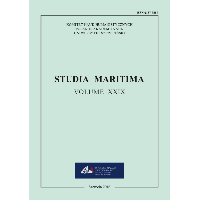Geopolityka w cieniu swastyki
Geopolitics in the Shadow of the Swastica (Hakenkreutz)
Author(s): Eugeniusz Cezary Król Subject(s): Military history, Political history, WW II and following years (1940 - 1949), Fascism, Nazism and WW II, Geopolitics
Published by: Wydawnictwo Naukowe Uniwersytetu Szczecińskiego
Keywords: geopolitics; the Third Reich;
Summary/Abstract: The author, using source materials and the literature in many languages, has assumed that in order to find the genesis of the Nazi interpretation of geopolitics it is necessary to have a look at the works written by the creators of that discipline, i.e. first of all German Friedrich Ratzel (1844–1904) and Swede Rudolf Kjellén (1864–1922). It is thanks to them that the terms – inter alia – Lebensraum (living space) and Raumsinn (sense of space) were included in the Nazi vocabulary. What later became important components of the Nazi geopolitics were: Mitteleuropa (Central Europe), Grossraumwirtschaft (big area economy) and Grossraumordnung (big area order). An important contribution was made by Karl Haushofer (1869–1946), who was in direct contact with Rudolf Hess, one of the closest associates of Adolf Hitler. The further deliberations imply that the Nazi concept of geopolitics, the main threads of which had already been included in the text of ‘Mein Kampf’, kept expanding by new slogans, becoming eclectic, and adapting to the changing situation, inside and outside Germany. The priority was still the specific doctrine of autarky, since 1936 subordinated to the preparations for war. After the outbreak of the Second World War in 1939 there appeared a programme including racial, ethnic and territorial transformations on a grand scale, inseparable from the programme of the ‘final solution’ (Endlösung), which led to extermination of the Jewish and Gypsy populations. Speaking more generally, if the war had been won, the Nazi programme of geopolitics would have led to the extermination of the Slavs (Generalplan Ost) and a final reconstruction of the European order, marked by genocide, ruthless economic exploitation and the unbridled dominance of the Germanic masters’ race (Herrenrasse).
Journal: Studia Maritima
- Issue Year: 29/2016
- Issue No: 1
- Page Range: 141-167
- Page Count: 27
- Language: Polish

